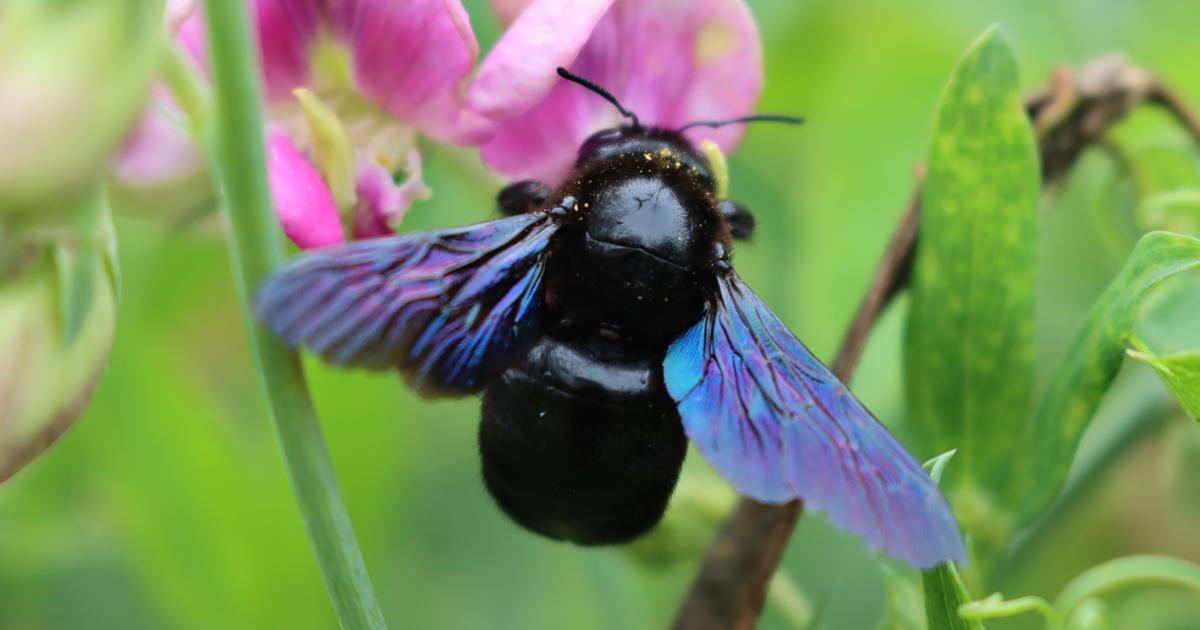The wisteria has a very special attraction in spring. The flowers are bright blue and exude an intense smell. But the climbing plant is a heavyweight - with consequences.
Munich (dpa / tmn) - It can take up entire house facades in no time and its lush flower clusters are a spectacular sight in spring: the wisteria has more to offer than many other climbing plants.
But it becomes so heavy that it is not for every garden. Experts reveal what amateur gardeners should know:
Where in the garden does the wisteria fit?
The wisteria, also called wisteria and wisteria, is one of the scaffold climbers. So he needs a trellis on which the sprout can wind itself up. Therefore, the wisteria is suitable, for example, for a location on a pergola, on an archway or on a wall. Till Hägele from the Botanical Garden Munich-Nymphenburg also recommends the climber for banisters. The advantage here is that the plant is easy to cut.
On which walls does the wisteria fit?
Since the wisteria can develop great weight and strength over the years, a stable scaffolding or trellis is required on the facade. With its looping movements, the climber can strangle and crush thin-walled trellises as well as rain gutters.
"On a sunny day, individual tendrils can grow up to 20 centimeters", reports Michael Henze from the Federal Association of Gardening and Landscaping (BGL). The shoots are also increasing in size and should therefore be kept away from windows and blind boxes. Henze recommends a stainless steel or metal structure with struts at least four centimeters thick as the basic scaffolding on the wall.
And the expert advises installing the scaffold at a distance of 20 centimeters from the house wall. The general rule is: the facade should be intact, not ventilated and not clad with shingles, otherwise there is a risk of damage from the wisteria.
What do I pay attention to when planting?
As a rule, the wisteria is commercially available as a young plant in a pot - from about one meter with a pot size of twelve centimeters, explains Hägele. If the plant is still small, it may not have any or only a few flowers.
Due to the rapid growth of the wisteria, one plant is often sufficient. For greening an entire facade, it can be a good idea to start from two points, says expert Henze.
Do you have to take care of the wisteria?
The wisteria is overall very robust and independent, explains the expert Hägele. The plant is not aware of a lack of nutrients.
This can lead to chlorosis in calcareous soils, a bleaching addiction in which the leaf veins turn deep green while the intermediate surfaces turn yellow. "But this is only a visual defect, and the plant does not accept it," explains Hägele. The garden owner can counteract this, for example by lowering the pH of the soil with an acidic fertilizer.
Otherwise you can just let the wisteria grow - apart from a cut if it gets too big. This is useful if the climber has dropped his leaves, Markely advises. In addition, it makes sense to shorten the side shoots in the spring before driving them out. This thinning also benefits the floral splendor, as flowers form on the woody shoots near the trunk and on horizontal branches, explains Henze.















